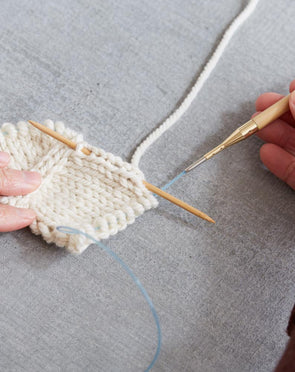Blocking can be such a magical process. Stitches smooth out, fibers fall perfectly in place, and your project seems to suddenly come to life. If you haven’t experienced the beauty of blocking, or feel like you could learn more, this is the tutorial for you! Julie takes you through the process of wet blocking a sweater step by step. But you can use this tutorial for any knit item (a hat, scarf, mittens, etc) or with a store-bought sweater that you don't want to take to the dry cleaner. You'll follow the same process if you have a sweater that is already blocked and needs rewashing. In this video Julie makes use of the Sweater Care Collection and Knitter's Block. You'll see how these tools can help make blocking a breeze!
















Comments
Hi Jo, You definitely can! Julie says she often finds she doesn’t need to, and that using the Sweater Care Brush on it is all it needs to look great. Hope that helps!
Do you recommend wet blocking mohair as well? Thank you :-)
Hi Susan, yes that is a good idea. It will make seaming easier :)
My pattern asks for the neckline to be made when the sweater is joined at the shoulders. Can I block the front, back and sleeves before joining them together for the neck.? Then perhaps block again with the neck cabling?
Hi Marjorie, Thanks for the feedback. While we are considering selling the pop-up dryer separately, it is currently available only in the kit.
Can I just get the pop up dryer, I have everything else.
Great information! Blocking is no longer a complete mystery.
Leave a Comment